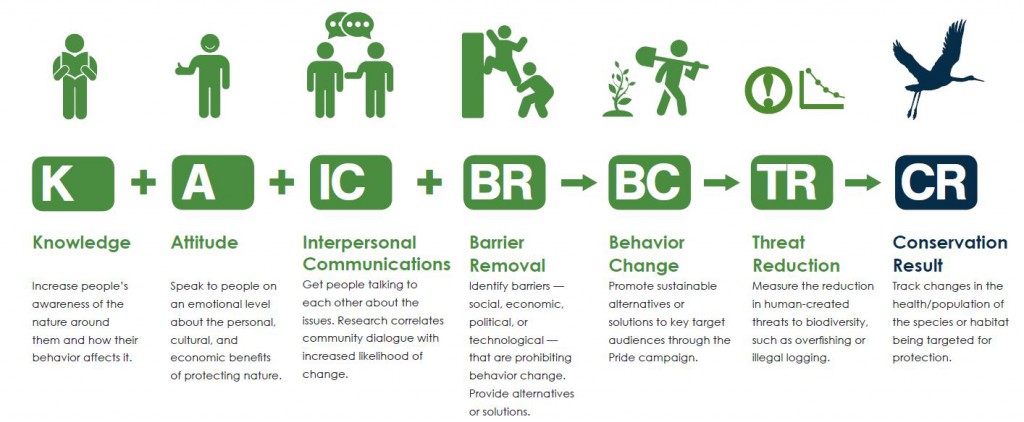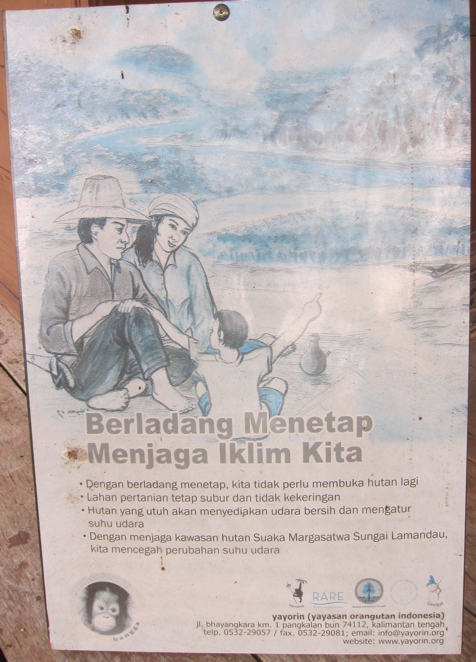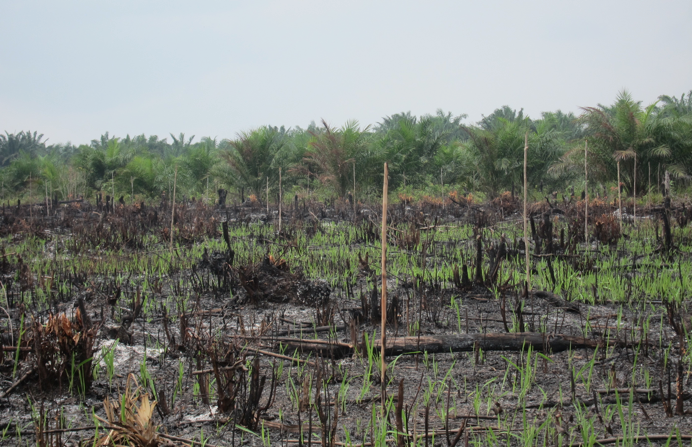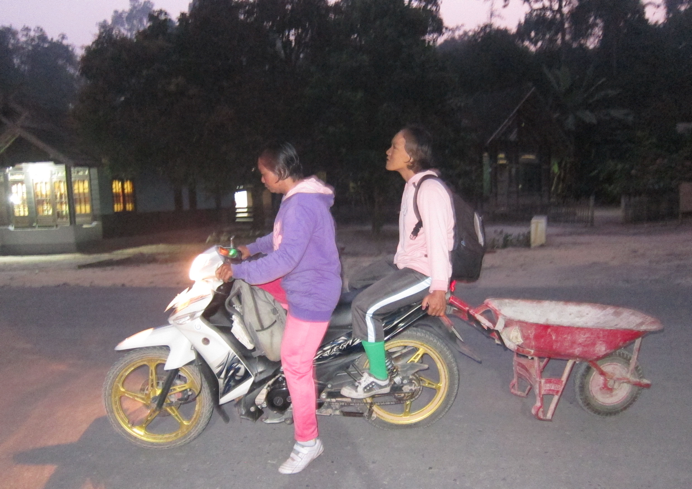Greg Acciaioli and Suraya Afiff
‘If an attractive girl in an advertisement could sell beer, why couldn’t a lovable parrot sell conservation?’ This declaration, by one of the founders of the transnational conservation organisation, Rare, encapsulates a unique approach to conservation.
Rare, headquartered in Arlington, Virginia, originated from a frustrated campaign to save the threatened Saint Lucia Parrot in the Southern Antilles of the Caribbean. The initial campaign depended upon the ‘traditional’ strategy of designing and distributing a poster to save the bird. This approach yielded few results. The conservationists then turned to the techniques of social marketing – marketing intended to change individuals’ attitudes in regard to social issues – in order to educate local people regarding the value of conservation.
The big question is whether campaigns using social marketing are sufficient to confront the major issues of conservation. To provide at least a partial answer to this question we examine the progress and outcomes of one of Rare’s signature Pride campaigns in the context of Central Kalimantan.
Social marketing in conservation
After the success of the new social marketing approach, conservationists who had been involved joined with other activists in 1973 to form Rare. The organisation is committed to upscaling these techniques for conservation across the globe, with a regional office in Bogor, where programs covering both Indonesia and Malaysia are administered. The major vehicle Rare uses to carry out such transformations is via ‘Pride’ campaigns, intended to appeal to people on an emotional level by promoting pride in their local environment.
The campaigns use techniques such as creating mascots to provide a focus for changing attitudes. They produce t-shirts, buttons, stickers, hats, key rings, badges and other marketing materials displaying the image of the mascot along with conservation messages. At face-to-face meetings with local community members, a person dressed as the mascot parades back and forth while videos showing endangered species are shown, skits are performed and messages are delivered to promote behaviours that will save the species and the environment needed to sustain it. As the Rare policy document ‘Conservation on a human scale’ proclaims, ‘Conservation ultimately comes down to people – their behaviors toward nature, their beliefs about its value, and their ability to protect it without sacrificing basic life needs.’
Rare’s focus upon changing individuals’ knowledge, attitudes and behaviours is embedded in its Theory of Change – the basis of its campaigns. Rare summarises this theory in the formula ‘an increase in knowledge plus a change in attitude, interpersonal communication and barrier removal leads to behavior change, which leads to threat reduction, and, ultimately, a conservation result’:
 Rare Theory of Change for community-based conservation, p. 3 - http://www.rare.org/sites/default/files/ToC_Booklet_Final_Rare.pdf
Rare Theory of Change for community-based conservation, p. 3 - http://www.rare.org/sites/default/files/ToC_Booklet_Final_Rare.pdf
Rare’s environmental education efforts are thus focused upon transforming individuals’ decisions rather than seeking change in social institutions. The 3C framework – Capacity, Constituent(s), Conservation – that is used to orient its campaigns maintains the same focus. Its private sector marketing tactics depend upon such techniques as audience segmentation, focus group testing of target messages and use of multiple media vehicles and outlets over a sustained time frame. It seeks to measure the adoption of new attitudes and actual behaviour change through its SMART methodology: Specific, Measurable, Action-Oriented, Realistic and Timebound.
Rare does not carry out these campaigns itself. It depends upon partnerships with conservation organisations that are operating in a local environment. Rare’s range of partnerships in the Indonesian and Malaysian region includes not only local conservation non-government organisations (NGOs), but also government ministries, directorates, park management authorities and other transnational conservation organisations. Such organisations provide a framework for the Rare fellows who design and carry out the Pride campaigns in specific locales.
Rare in Central Kalimantan
Environmental education initiatives outside the context of formal schooling have often focused on rural populations living in the vicinity of protected areas such as national parks, marine parks, and wildlife reserves. We examine here the effects of one Pride campaign carried out under Rare’s auspices in Central Kalimantan in the vicinity of the Lamandau Wildlife Reserve (Suaka Margasatwa Sungai Lamandau) in West Kotawaringin district.
In the Lamandau case the partner organisation was a local conservation NGO in West Kotawaringin promoting the protection of orangutans. The head of this organisation’s education section was selected as a Rare fellow to lead the local Pride campaign, and enrolled in Rare’s two-year mentoring program to learn how to manage this campaign. This program also awards the campaign manager an MA in Communication for Conservation Practitioners through the University of Texas at El Paso (UTEP).
The campaign for the Lamandau Wildlife Reserve was initiated in 2008 and proceeded along the lines of the Pride model. As part of the initial project planning process, the campaign manager – or ‘hero’ – designed a model or factor chain for the reserve. Linked to his model was a threat-ranking analysis that identified five threats in order of descending importance: fire; land clearing; logging; poaching; and pollution. Strategically, he chose to concentrate upon the first two threats as target behaviours to be modified among local villagers during the campaign.
The campaign motto was ‘Be Prudent on Our Own Land’ (‘Hemat di Lahan Sendiri’) with four related calls to action: ‘Permanent Agriculture is More Profitable’; ‘Permanent Agriculture Saves our Water’; ‘Permanent Agriculture Maintains Our Climate’ and ‘Permanent Agriculture Provides other Benefits for the Forest’. Not surprisingly, the orangutan was chosen as the primary mascot of the campaign and named Paman (uncle) Wira. Two subsidiary mascots were also designated – the hornbill Bili, Si Rangkong, and the deer, Sam – but they were not always present in campaign activities.
Media vehicles of the campaign included public service announcements on local radio programs such as talk shows; stickers with the campaign logo and slogan; posters showing permanent agriculture; calendars showing projected effects of climate change; a bulletin entitled Sumpitan (‘Blowpipe’, the iconic hunting tool of the local majority Dayak population); fact sheets (for example, ‘How to Cultivate Land without Slash-and-Burn’); and community meetings and training sessions on undertaking agriculture without slash-and-burn techniques, using comparisons with other regions.
Central to the campaign was the setting up of an agroforestry demonstration plot as the primary ‘barrier removal’ technique. It was intended to show how forest-based agriculture could focus upon producing commodities such as rubber, fruit and garden vegetables and spices that did not require slash-and-burn techniques. The campaign manager emphasised in his final report that the demonstration effect of showing the successful cultivation of chillies, eggplants, bitter melons, gourds and other horticultural crops was the most important medium to effect change in villagers’ attitudes and behaviours: ‘when influenced by something from outside that gives them benefits and is inspirational, they are capable of changing their attitude and behavior and try to emulate new things’.
Towards the end of the campaign a number of surveys were conducted to assess its impact upon knowledge, attitudes and behaviours. As the campaign manager reported, all indicators demonstrated the success of the campaign. For example, local farmers’ knowledge of mixed crop sedentary farming or agroforestry without burning increased from 50 per cent to 93 per cent. Farmers’ belief in the benefits of adopting the sedentary mixed farming model increased from 91.7 per cent to 100 per cent. Other survey results showed improvement in attitudes to adopting mixed crop sedentary farming and more engagement in interpersonal communication about new farming techniques.
The final report also cited actual ‘behaviour change’. For example, in the two primary target villages 118 farmers had adopted sedentary farming without any supplementary slash-and-burn agriculture, while 39 farmers had also adopted such farming while still engaging in slash-and-burn agriculture. ‘Threat reduction’ was indicated by the decrease in the number of forest fires, as well as the reduction of logging activities. Documented changes in the amount of local forest cover demonstrated the positive ‘conservation result’.
This campaign manager also obtained one of the Rare Alumni grants to carry out two additional campaigns to promote the sustainability of the original campaign’s results. As the manager reported in an interview on the Rare blog for Pride campaign alumni, these further campaigns changed behaviours ‘fast and effectively’. Whereas in the original Pride campaign 77 per cent of farmers stopped using slash-and-burn agriculture, the subsequent campaign increased this to 96 per cent. Fifty-eight per cent of farmers adopted agroforestry, cultivating ‘rubber, banana and papaya trees’.
 Poster to stop shifting cultivation in Central Kalimantan - Credit: Suraya Afiff
Poster to stop shifting cultivation in Central Kalimantan - Credit: Suraya Afiff
The cumulative weight of such evidence indicates a whole-hearted success of these campaigns among the farmers in the vicinity of Lamandau Wildlife Reserve. Indeed, staff at the Rare branch office in Bogor confirmed that the Lamandau campaign was one of the most successful not only in that cohort, but among all the campaigns ever conducted under Rare auspices in the region.
Results in question
However, there are some grounds to question the long-term extent of this success. As the manager admitted in his final report, there were more changes in regard to people’s knowledge than in their attitudes. Changes in both knowledge and attitudes were greater than the considerably smaller amount of change in people’s actual behaviours.
In addition, there were differences in the reception of the campaigns between villages. The Pride campaign had been enthusiastically accepted in Tempayung, but farmers in Babual Baboti had expressed more resistance. In Babual Baboti, farmers had recently reclaimed what they regarded as their customary land from the Lamandau Wildlife Reserve in order to establish oil palm plots. They were far more interested in planting oil palm than horticultural plants.
Even villagers in Tempayung stated in later interviews for our research their preference for planting oil palm rather than rubber when they had sufficient capital. Villagers used their own cost-benefit analysis to show that they gained higher income from palm oil, rather than the mixed agroforestry promoted in the Pride campaign demonstration plot.
In these later interviews many of the farmers who had participated in the Pride campaign’s training admitted that in order to continue growing rice in their dry field plots, they simply had to continue using fire. As they declared, ‘our rice wouldn’t grow if we did not burn the land during the preparation before we do the planting.’
While the Pride campaign’s demonstration plot was useful in changing the ways that farmers plant crops such as rubber for sale, it did not address their felt need to continue planting their staple crop for consumption – dry rice. In addition, the campaign’s emphasis on changing their attitudes to multispecies agroforestry could not compete with farmers’ own calculation of the greater income from planting monoculture oil palm once their dry field plots could no longer yield rice.
The big question
However, simply considering specific aspects of program success or failure does not address the big question. Does Rare’s focus on changing individuals’ knowledge, attitudes and behaviours yield the results needed to confront the pressing conservation issues in regions such as Central Kalimantan?
The reduction of forest fires in the vicinity of the Lamandau Wildlife Reserve reported by the Pride campaign manager may very well have been influenced by the success of the Pride campaign in reducing, at least in the short term, the burning off of swidden plots for dry rice agriculture. However, in those years when the haze problem due to burning of the forests in Kalimantan and Sumatra have been greatest, satellite images have demonstrated that the foci of these fires are areas of clearing large-scale plantations, primarily for oil palm cultivation, not the swidden plots of small-scale farmers.
 Clearing land with fire to set up oil palm plantation in Central Kalimantan - Credit: Suraya Afiff
Clearing land with fire to set up oil palm plantation in Central Kalimantan - Credit: Suraya Afiff
In other words, an emphasis on changing the behaviours of individual farmers does not address the primary cause of what even the Pride campaign’s threat analysis identifies as the single greatest threat in Borneo. The emphasis upon transforming individuals’ behaviours hardly begins to address the wider structural forces that are the underlying drivers of widespread haze-producing fires, illegal logging, and the other aspects of deforestation in Borneo and other parts of Indonesia. Conservation initiatives such as the Pride campaign certainly do have an impact – their successes are real – but they are not sufficient to address the larger aims that their programs purportedly seek to achieve.
Rare’s approach to conservation can be labelled as neoliberal. Neoliberalism as an ideology emphasises the operation of the market rather than the state as the key institution to solve human problems. Neoliberalism focuses upon the actions and decisions of individuals rather than the operation of institutions. Neoliberal policies and programs seek to create and foster self-interested individuals who evaluate courses of action on the pragmatic grounds of benefits outweighing costs.
In the environmental arena neoliberal conservation programs must demonstrate that they bring more benefits to individuals than costs. Getting people to think in this way is a matter of educating them to be stakeholders in environmental sustainability. Neoliberal environmental education thus focuses upon modifying attitudes and behaviours of individuals in order to mitigate environmental impacts.
Rare’s orientation to conservation, as realised in the Pride campaigns conducted under its auspices, fits this model. Individuals are seen as the source of environmental degradation, and changing their knowledge, attitudes and behaviours as the key to reversing it. Larger structural conditions such as the imperative for continual economic growth through large-scale agro-industrial enterprises such as oil palm plantations are left untouched.
It is perhaps telling that the crucial step of ‘barrier removal’ in the Rare theory of change, which underlies its Pride campaigns, shows one person giving a lift to another person trying to climb a wall – as evident in the icons of the formula given above. Such actions may certainly help individuals here and there to climb over institutional barriers to achieve personal goals. However, they do not remove the institutional barriers. And sometimes it is the tearing down of such walls – the institutional drivers at national, regional and global scales that promote and defend proliferation of oil palm plantations and other such environmentally destructive institutions – that is necessary if such extensive goals as achieving conservation are to be realised.
Greg Acciaioli (gregory.acciaioli@uwa.edu.au) teaches in Anthropology and Sociology at The University of Western Australia.
Suraya Afiff (safiff@gmail.com) teaches in the Department of Anthropology at the University of Indonesia and is the former director of the Centre for Anthropological Studies (Pusat Kajian Antropologi).
